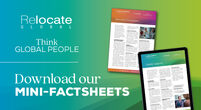Remote working, also known as telecommuting or working from home, refers to a work arrangement where employees perform their job duties and tasks from a location outside of the traditional office environment. Instead of commuting to a physical office, remote workers can work from their homes, co-working spaces, coffee shops, or any location with an internet connection. Read more
Key characteristics and aspects of remote working include:
Flexible Location: Remote workers have the flexibility to choose where they work, as long as they have the necessary tools and resources to perform their job effectively.
Technology: Remote work relies heavily on technology, including computers, internet access, email, video conferencing, project management tools, and collaboration software to facilitate communication and productivity.
Communication: Remote workers often use digital communication tools like email, instant messaging, video conferencing, and phone calls to stay in touch with colleagues, managers, and clients.
Autonomy: Remote workers typically have a higher degree of autonomy and responsibility for managing their work schedules and tasks. They must be self-motivated and disciplined to meet their job requirements.
Work-Life Balance: Remote work can offer improved work-life balance for employees, as it allows them to better integrate their professional and personal lives. However, it can also blur the boundaries between work and personal life, requiring individuals to set clear boundaries.
Productivity: While remote work can lead to increased productivity for some employees due to reduced commuting and fewer workplace distractions, it may also present challenges related to isolation and distractions at home.
Employer Benefits: Employers can benefit from remote work arrangements by potentially reducing overhead costs associated with maintaining physical office spaces, expanding their talent pool by hiring remote employees from different geographic areas, and improving employee retention and job satisfaction.
Challenges: Remote work is not without challenges, such as potential feelings of isolation, communication difficulties, and the need for effective time management and self-discipline.
The COVID-19 pandemic significantly accelerated the adoption of remote working around the world, as many organisations implemented remote work policies to ensure business continuity and employee safety. As a result, remote work has become a more mainstream and accepted work arrangement in many industries, and it is likely to continue evolving in the future as companies explore hybrid work models that combine remote and in-office work.
Read lessFeatures

Mini Factsheets

Interview with Josh Winfield, KPMG

Staying ahead: Future-proofing the global mobility function
 Your opportunity to explore global mobility policy and practices and how to support international workforce and their families. Download Remote working mini-factsheets:
Your opportunity to explore global mobility policy and practices and how to support international workforce and their families. Download Remote working mini-factsheets:


















